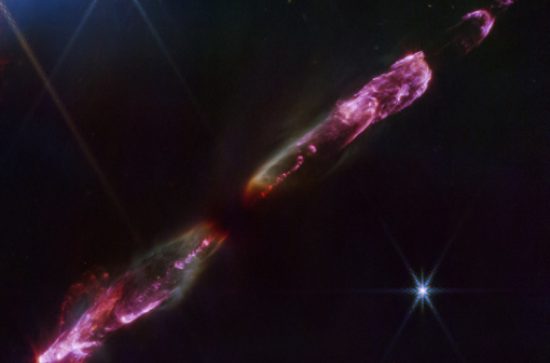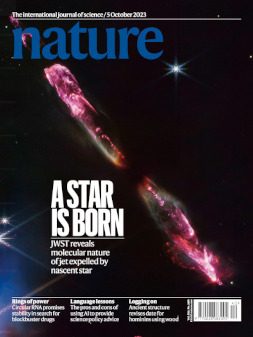
The James Webb Space Telescope (JWST) was launched in December 2021 and is a collaborative mission between NASA, the European Space Agency (ESA) and the Canadian Space Agency (CSA). One of the main aims of JWST is to understand how stars and planets form. This cannot be done easily from the ground because new stars are enshrouded in gas and dust that prevents their optical light from reaching Earth. Instead JWST used infrared light to penetrate this veil.
A team of astronomers led by Prof. Tom Ray of the Dublin Institute for Advanced Studies (DIAS) and including Dr. Patrick Kavanagh of Maynooth University's Department of Experimetnal Physics turned JWST on one of the youngest stars know, a “baby” that is only a few thousand years old. The results, which are published in Nature Main Journal, reveals one of the most spectacular pictures of stellar birth to date. The above image was taken using the near-infrared camera (NIRCam) on JWST. It shows the amazing jets being emitted by the young star, known as Herbig-Haro 211-mm, located at a distance of just over 1000 lightyears in the constellation Perseus. The baby star remains hidden from our view even using JWST, enshrouded in the cloud of gas and dust in which it was born at the centre of the opposing jets.
One very important finding from this research is that the very youngest stars appear to emit beams of almost pure molecules contrary to what astronomers thought before. How such beams are produced without the added ingredients of atoms and ions, is currently a mystery. The stunning image was chosen for the front cover of Nature.

Dr. Kavanagh worked for many years at DIAS on the development, testing and commissioning of the Mid-Infared Instrument (MIRI) on JWST, and now leads a Science Foundation Ireland - Irish Research Council Pathway funded group at Maynooth University working on MIRI gauranteed time programmes. The study of Herbig-Haro 211 was conducted as part of the JOYS (JWST Observations of Young protoStars) programme.
The Nature article can be found here.
Credit: Nature, Ray et al. 2023
Cover image: NASA, ESA, CSA/Mark McCaughrean & Patrick Kavanagh
